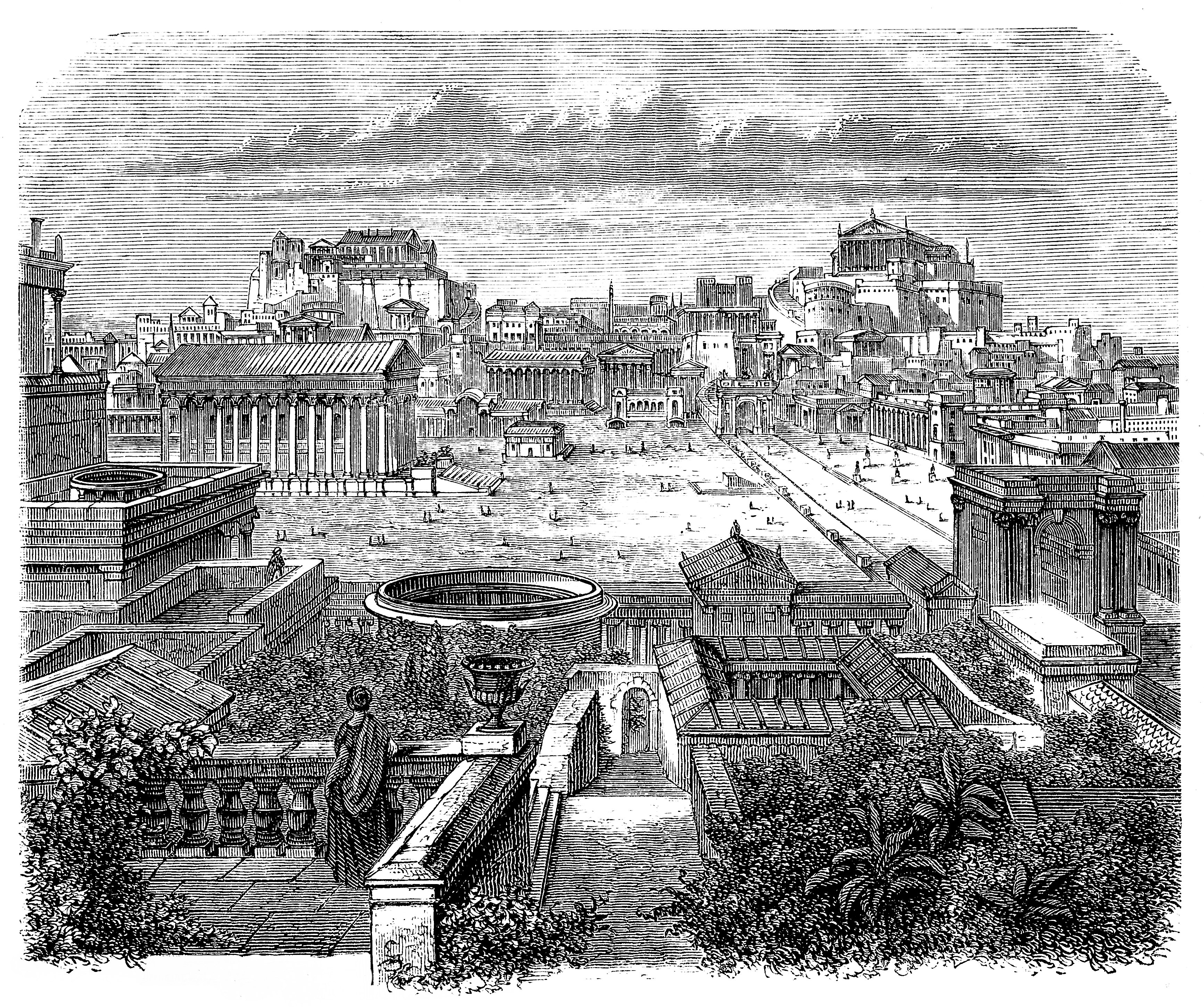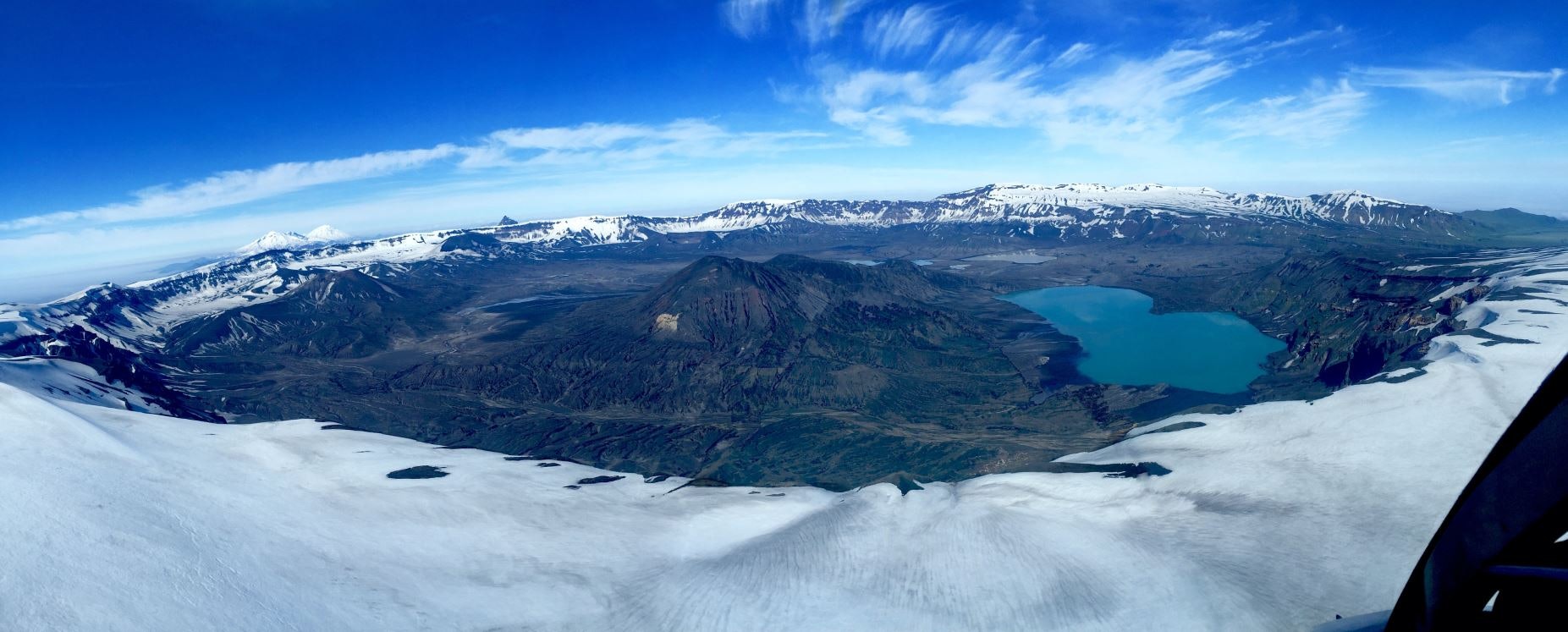
Exactly what triggered the demise of the Roman Empire, some 1,500 years ago, is still hotly debated: Ideas in the running include a Goth invasion, economic woes, and that timeless chestnut, government corruption.
A new theory suggests that Rome's troubles began when it was still a republic, ignited by a major eruption across the world — in the present-day United States.
Around 43 BCE, a year after the death of Julius Caesar, Rome was hit with a long period of bad weather. Frigid temperatures wrecked crops and spurred disease, famine, and general unrest. Scientists have theorized that the bad weather patterns were due to a volcanic eruption — but they didn't have proof of where, and how.
The eruption, researchers now believe, took place at the Okmok volcano on Alaska's Umnak Island. With a new analysis of particles found in ice cores, researchers determined that Okmok's eruption coincided with Rome's cold spell on the other side of the planet.
Fallout from the volcano caused widespread cold weather that lasted for two years, marking some of the coldest temperatures in the region over the past two and a half millennia, finds the study, published Monday in the journal Proceedings of the National Academy of Sciences.
How they did it -- To confirm that the source of the fallout in Rome was the Alaska volcano eruption, researchers analyzed frozen volcanic rock, called tephra, which was uncovered in ice cores from the Arctic. They matched up tephra samples from different parts of the world to establish a "chemical fingerprint" that links Rome to Alaska.

"The tephra match doesn't get any better," said co-author Gill Plunkett, a researcher at Queen's University Belfast. "We compared the chemical fingerprint of the tephra found in the ice with tephra from volcanoes thought to have erupted about that time and it was very clear that the source of the 43 BCE fallout in the ice was the Okmok II eruption."
The team also gathered climate data from tree rings and cave formations to confirm data about the weather patterns during the time period. In the two years following the eruption, the Northern Hemisphere recorded some of its coldest-ever temperatures; the decade following was the fourth-coldest ever, the researchers report.
Volcano forms a massive crater — Not only did the mass eruption cause a devastating cold spell on the other side of the world; it also did itself in. Thanks to the explosion, the mouth of Okmok collapsed, forming a six-mile-wide crater — a caldera — that remains today.
The formation of a caldera doesn't mean a volcano can't erupt anymore. Okmok still erupts periodically, reports the Alaska Volcano Observatory.
Most recently, Okmok erupted in July 2008 without warning, launching ash 35,000 feet high.

Hot lava cools the atmosphere — It may seem counterintuitive, but when a volcano erupts, the aftermath can cause dropping temperatures.
Volcanic fallout releases sulfur particles, which become sulfur dioxide when they react with oxygen. Those particles form sulfuric acid aerosols, which block sunlight from reaching the Earth. As a result, temperatures get cooler — and the effect of big eruptions like Okmok II can spread worldwide.
Previous research has found that a major eruption of an Indonesia volcano in 1809 had a similarly chilling effect. The decade following that event saw an extreme temperature drop. The year 1816 was a standout — researchers call it the "year without a summer."
The new evidence suggests that the lack of sun and warmth led to devastating outcomes for the Roman republic. Shortly after the eruption, in 27 BCE, Rome became the empire whose ending is still debated today.
With the new findings, researchers have more insight into the cluster of events that eventually led to the empire's demise.
Abstract: The assassination of Julius Caesar in 44 BCE triggered a power struggle that ultimately ended the Roman Republic and, eventually, the Ptolemaic Kingdom, leading to the rise of the Roman Empire. Climate proxies and written documents indicate that this struggle occurred during a period of unusually inclement weather, famine, and disease in the Mediterranean region; historians have previously speculated that a large volcanic eruption of unknown origin was the most likely cause. Here we show using well-dated volcanic fallout records in six Arctic ice cores that one of the largest volcanic eruptions of the past 2,500 y occurred in early 43 BCE, with distinct geochemistry of tephra deposited during the event identifying the Okmok volcano in Alaska as the source. Climate proxy records show that 43 and 42 BCE were among the coldest years of recent millennia in the Northern Hemisphere at the start of one of the coldest decades. Earth system modeling suggests that radiative forcing from this massive, high-latitude eruption led to pronounced changes in hydroclimate, including seasonal temperatures in specific Mediterranean regions as much as 7 °C below normal during the 2 y period following the eruption and unusually wet conditions. While it is difficult to establish direct causal linkages to thinly documented historical events, the wet and very cold conditions from this massive eruption on the opposite side of Earth probably resulted in crop failures, famine, and disease, exacerbating social unrest and contributing to political realignments throughout the Mediterranean region at this critical juncture of Western civilization.







